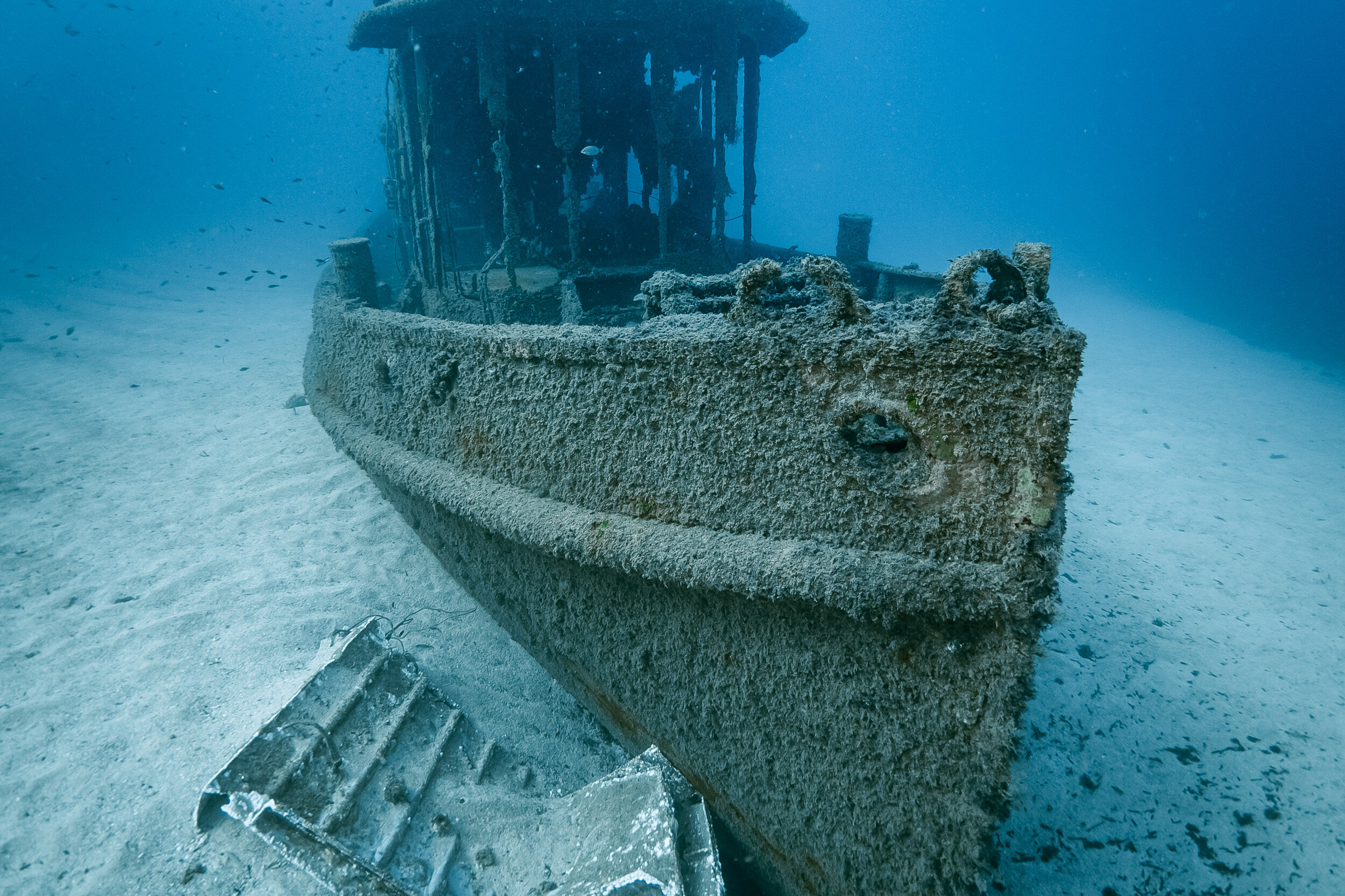Description:
Mosquito Fighter Bomber wreck
The Mosquito Fighter Bomber wreck, located near Malta, offers a unique and historically rich diving experience. Known as the De Havilland Mosquito, this British twin-engine, two-seat multipurpose aircraft primarily served as a fighter-bomber during its operational period. Remarkable for its construction, the Mosquito was predominantly made of wood, except for its aluminium tail, a feature that made it stand out among other aircraft of its era.
The wreck’s history is marked by a tragic incident on March 26, 1949, when the aircraft, during a mail run, experienced issues with its starboard engine shortly after take-off. Attempts to return to Hal Far airfield were unsuccessful, leading to its crash into the sea. Today, the wreck lies upside down at a depth of approximately 40 meters, about 500 meters off the coast of Delimara Point on the east side of Malta. The site is characterized by strong currents and is recommended for experienced divers.
Over time, the wooden parts of the Mosquito have significantly decayed, leaving behind a twisted metal frame and a mass of cables between the two intact engines. The aluminium tail is mostly buried in the sand, surrounded by miscellaneous metal parts. The starboard engine still has its propeller attached, offering a glimpse into the aircraft’s structure and design.
The site’s average depth is around 42 meters, making it a deep boat dive. Divers visiting the Mosquito Fighter Bomber wreck can expect to encounter an intriguing piece of World War II history, set against a backdrop of sandy seabed and small nearby reefs
Bristol Blenheim Bomber wreck
The Bristol Blenheim Bomber wreck near Malta is a significant dive site for divers, offering a unique opportunity to explore a piece of World War II history. This light bomber aircraft, built by the Bristol Aeroplane Company and operated by the British Royal Air Force, met its fate during a mission to Kefalonia, Greece. On December 13, 1941, it was attacked by an Italian enemy aircraft, causing damage to its port engine. The pilot had to ditch the plane in the sea near Malta, and fortunately, the crew survived with minor injuries.
Located about 500 meters off Xrobb l-Ghagin on the east coast of Malta, the wreck lies upright on a seabed of sand and small reefs at a depth of 42 meters. It is a challenging dive site due to its depth and the occasional strong currents.
Notable features of the wreck include mostly intact wings and radial engines. The starboard engine still has a bent propeller, while the port engine propeller is missing. The cockpit cover is also absent, and the rear fuselage has broken off, lying a few meters away from the main wreckage, upside down and mostly buried in sand.
The Bristol Blenheim Bomber dive site is best suited for advanced divers. It requires boat access due to its offshore location. Divers should be aware of the challenging conditions and ensure they have the appropriate level of experience and certification for such a dive.
St. Michael wreck
The St. Michael wreck, located at Zonqor Point in Marsaskala on the southeastern coast of Malta, is a popular dive site known for its marine biodiversity. This former tugboat, originally working in the Grand Harbour of Valletta, was purposely scuttled in May 1998 along with another tugboat, Number 10, to create an artificial reef and a scuba diving attraction.
The St. Michael wreck is about 20 meters long and lies upright on a flat sandy bottom at a depth of 22 meters, with the uppermost part at around 17 meters. It is situated approximately 15 meters from the reef. When the visibility is good, the wreck can be seen from the reef, although visibility in Marsaskala Bay may vary. The Tugboat 10, positioned about 50 meters west from the stern of St. Michael and closer to the reef, is usually visited on the same dive.
Both tugboats, now partially covered with sponges and corals, have created a beautiful artificial reef and a habitat for a variety of marine life. These sites have transformed an ecologically barren seabed into a thriving shore diving location that is accessible for divers of all levels. The location is particularly favorable as it is sheltered from north-westerly winds, making it a popular dive site, especially during the summer months.
The site offers an excellent opportunity for medium-depth wreck dives and is also a good spot for underwater photography due to the marine life and the structure of the wreck itself.
Your dive trip:
09:00 – Departure from Ta Xbiex marina
10:30 – Arriving to 1st dive site
11:30 – 1st dive
12:30 – Heading to 2nd dive site/free time.
13:30 – 2nd dive
14:30 – Heading to 3rd dive site/free time.
16:00 – 3rd dive
17:00 – Return to Ta Xbiex marina
Book your place on a boat:
per person
€138.00
The boat:
Each and every dive trip on our boat includes the following extras:



